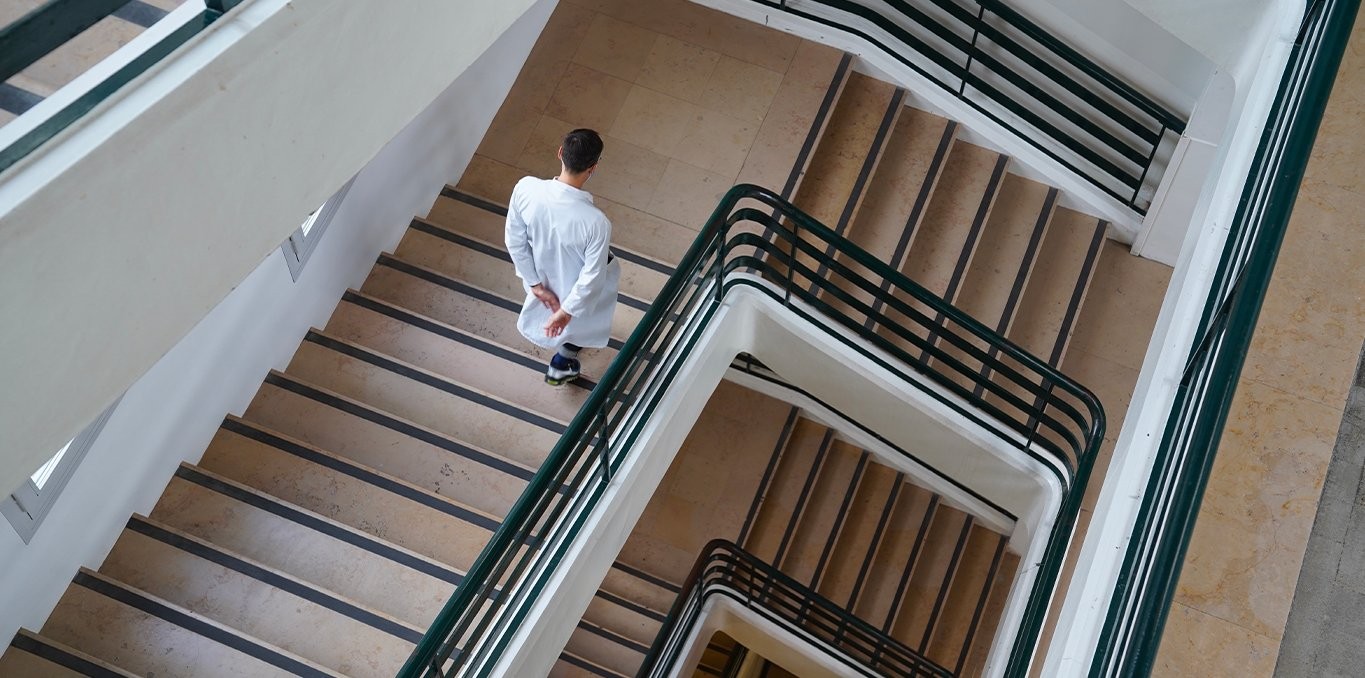On the Edge

How can one provide proper care in a failing institution? In a hospital on the outskirts of Paris, Dr. Abdel-Kader, a liaison psychiatrist, moves between the emergency room and the intensive care unit, treating patients with mental disorders or chronic illnesses that keep them bedridden. Despite pressure for efficiency and a lack of resources, he strives to ease their suffering.
| Directors | Nicolas Peduzzi, Nicolas Peduzzi |
| Actors | L'équipe de Tënk, L'équipe de Tënk |
| Share on |
The ailing body in this film is the public hospital itself. Nicolas Peduzzi steps away from his obsession with marginalized American spaces under the grip of codeine (Southern Belle) or mental hurricanes (Ghost Song), and instead examines, in a direct cinema style, a battered institution. État limite is supported by a powerful opening sequence with a gabber track that deserves a place in a grimacing Pantheon, the "Chopin-esque" score by Gaël Rakotondrabe, and most importantly, the beautiful black-and-white photographic inserts by Pénélope Chauvelot. The film avoids being a conventional documentary "on a subject" by unfolding a range of raw emotions that inform us deeply about the pulsations stirring the Beaujon Hospital. The psychiatrist’s back pain, followed in close-up, encapsulates a bitter potion that seems far from disappearing: the pauperization of public services and the compassionate juggling skills needed to carry out the liaison role within the hospital-hive, among patients, doctors, interns, and exhausted police officers. It is this instability that drives the film, one that is just, discreet, and precisely attuned to the stakes it raises.
Benoît Hické
Programmer and professor

-

Français
1h44
Language: Français -

English
1h44
Language: English
- Année 2023
- Pays France
- Durée 104
- Producteur GoGoGo Films
- Langue French
- Sous-titres English
- Résumé court How can one provide proper care in a failing institution? In a hospital on the outskirts of Paris, a psychiatrist tries to fulfill his mission, at the risk of getting lost.
The ailing body in this film is the public hospital itself. Nicolas Peduzzi steps away from his obsession with marginalized American spaces under the grip of codeine (Southern Belle) or mental hurricanes (Ghost Song), and instead examines, in a direct cinema style, a battered institution. État limite is supported by a powerful opening sequence with a gabber track that deserves a place in a grimacing Pantheon, the "Chopin-esque" score by Gaël Rakotondrabe, and most importantly, the beautiful black-and-white photographic inserts by Pénélope Chauvelot. The film avoids being a conventional documentary "on a subject" by unfolding a range of raw emotions that inform us deeply about the pulsations stirring the Beaujon Hospital. The psychiatrist’s back pain, followed in close-up, encapsulates a bitter potion that seems far from disappearing: the pauperization of public services and the compassionate juggling skills needed to carry out the liaison role within the hospital-hive, among patients, doctors, interns, and exhausted police officers. It is this instability that drives the film, one that is just, discreet, and precisely attuned to the stakes it raises.
Benoît Hické
Programmer and professor
-

Français
Duration: 1h44Language: Français1h44 -

English
Duration: 1h44Language: English1h44
- Année 2023
- Pays France
- Durée 104
- Producteur GoGoGo Films
- Langue French
- Sous-titres English
- Résumé court How can one provide proper care in a failing institution? In a hospital on the outskirts of Paris, a psychiatrist tries to fulfill his mission, at the risk of getting lost.
